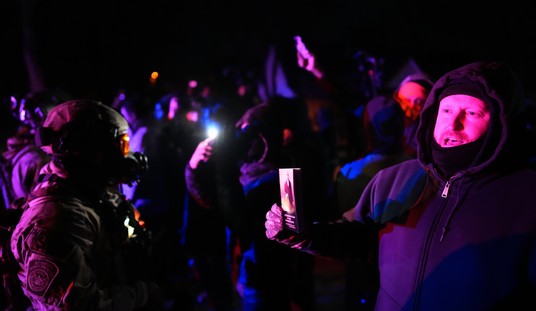
Today is National Meteor Day. Given the events of this day 111 years ago, the date selected is no accident.
That’s because on this date the most violent explosion in recorded history occurred when a meteorite is believed to have exploded in the air over the Tunguska River in Siberia.
You may have seen pictures taken years after the fact, but the vastness of the devastation is truly amazing — and disquieting.
On this day and for days afterward in 1908, skies as far away as Scotland were aglow from the residue of the immense explosion.
Thankfully, the invader exploded over a largely unpopulated area, leaving trees and wildlife to deal with the aftermath. There were no recorded fatalities. The impact occurred just after 7 a.m. local time, which is a heck of a way to get rousted out of bed.
Yet there were people who saw it happen, albeit from many miles away. They had amazing stories to tell.
S.B. Semenov, a man living in the immediate area of the blast, described it as such:
“Over Onkoul’s Tunguska Road, the sky split in two and fire appeared high and wide over the forest. The split in the sky grew larger, and the entire northern side was covered with fire. At that moment I became so hot that I couldn’t bear it as if my shirt was on fire; from the northern side, where the fire was, came strong heat. I wanted to tear off my shirt and throw it down, but then the sky shut closed, and a strong thump sounded, and I was thrown a few meters.”
That would have been the shock wave from the explosion. Reports of similar sensations were received from people 40 miles away from the site of the blast. Later recreations estimated that if a meteor had caused the explosion, it would have been traveling 34,000 miles per hour upon entering Earth’s atmosphere and exploded about nine miles above the ground.
The resulting explosion was about 85 times stronger than the atomic bomb that leveled Hiroshima, with a shock wave equivalent to a 5.0 Richter-scale earthquake, causing damage that had to be seen to be truly believed, though evidence traveled quickly.
The massive explosion packed a wallop. The resulting seismic shockwave registered with sensitive barometers as far away as England. Dense clouds formed over the region at high altitudes which reflected sunlight from beyond the horizon. Night skies glowed, and reports came in that people who lived as far away as Asia could read newspapers outdoors as late as midnight. Locally, hundreds of reindeer, the livelihood of local herders, were killed, but there was no direct evidence that any person perished in the blast.
Expeditions to the area in the 1920s led by Leonid Alexjewitch Kulik discovered a blast radius of about 820 square miles in the forest near Tunguska. Only in the center were trees still standing, with branches and bark burned away. Around the epicenter, which was about five square miles in size, an estimated 80 million trees had been felled in a radial pattern emanating away from the center.
Kulik also didn’t find a crater, which led to theorizing about exactly what had happened. The damage was consistent with an immense airburst, but a local newspaper account of the day was plain enough:
“On the 17th of June, around 9 a.m. in the morning, we observed an unusual natural occurrence. In the north Karelinski village [200 verst north of Kirensk] the peasants saw to the north west, rather high above the horizon, some strangely bright (impossible to look at) bluish-white heavenly body, which for 10 minutes moved downwards. The body appeared as a “pipe”, i.e., a cylinder. The sky was cloudless, only a small dark cloud was observed in the general direction of the bright body. It was hot and dry. As the body neared the ground (forest), the bright body seemed to smudge, and then turned into a giant billow of black smoke, and a loud knocking (not thunder) was heard, as if large stones were falling, or artillery was fired. All buildings shook. At the same time the cloud began emitting flames of uncertain shapes. All villagers were stricken with panic and took to the streets, women cried, thinking it was the end of the world.” — Sibir newspaper, July 2, 1908
Local indigenous guides deserted Kulik as he neared the site, out of superstitious fears, but Kulik spent the next several years studying the event. He theorized that an iron meteorite had exploded in the atmosphere, but others thought it might have been a comet.
Since no trace of the object remained, the theory went that a giant ball of ice had exploded, melting itself in the process. Others believed that an immense natural gas explosion had taken place, while still others believed a small black hole had collided with the Earth or, in the History Channel explanation, it might have been aliens.
Today, the generally accepted theory is a meteorite. The Earth was about to pass through the Perseid meteor shower at the time, which it does annually, with the thought being that one of the larger hunks had made impact.
Scientists disagree as to how often such an event takes place on Earth. They think that such an explosion could occur every 300 to 1,000 years, but there’s no doubt that what happened at Tunguska is the largest explosion in recorded history.
As for Kulik, he sadly didn’t get to conclude his research. Drafted into the Army after the German invasion in World War II, he was captured in 1942 and perished in a German prison camp. Since then, scientists the world over have carried on his work, but perhaps equally amazingly, the forest has reclaimed the site of the explosion since then — and no visible traces of the blast can be seen in the area today.
Enjoy today’s open thread!














Join the conversation as a VIP Member